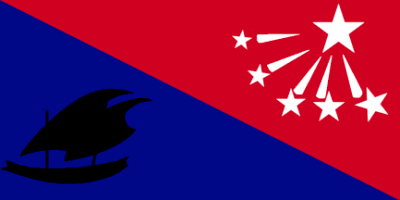 | ||
Government Provincial government, Government of Papua New Guinea | ||
Flags of provinces of papua new guinea vlajky provincii pupuy nov guineje
The provinces of Papua New Guinea are the primary administrative divisions of the country. Provincial governments are branches of the national government– Papua New Guinea is not a federation of provinces. The country has 22 province-level divisions: 20 provinces, one autonomous region (Bougainville) and the National Capital District.
Contents
- Flags of provinces of papua new guinea vlajky provincii pupuy nov guineje
- History
- The Bougainville issue
- Government
- Naming of provinces
- New provinces
- Regions
- References
Parliament approved in 2009 the creation of two additional provinces by 2012: Hela Province, which would consist of part of the current Southern Highlands Province, and Jiwaka Province, which would be formed by dividing Western Highlands Province. The two new provinces officially came into being on 17 May 2012.
History
Immediately before independence on 16 September 1975, Papua New Guinea was divided into nineteen provinces and the National Capital District. These provinces corresponded to the "Districts" of the pre-Independence administration of the Territory of Papua and New Guinea.
The Bougainville issue
It had been considered that an independent state with limited resources could ill afford the infrastructure of a two-level quasi-federal governmental structure.
However, a secession movement in Bougainville, whose Bougainville Copper Mine provided the largest single source of foreign exchange and whose contribution to the general revenue was crucial to the independent state's economic viability, forced the issue. The Bougainville secession movement declared the Republic of the North Solomons on 1 September 1975 and the central government very quickly responded by offering provincial status to Bougainville. For the sake of consistency, as there were or had been regional separatist movements in Papua and East New Britain, provincial status was offered to the other 18 Districts as well.
Bougainville continues to be a special case. A renewed secession movement emerged in 1988 and resulted in a violent military campaign on the island, the closing of the Bougainville Copper Mine with serious financial consequences for the central government, the destruction or running-down of most infrastructure on the island and, ultimately, the total quarantining of the province for a decade. The Sandline affair of 1997 was a political scandal that became one of the defining moments in the history of Papua New Guinea, and particularly that of the conflict in Bougainville.
The Bougainville secessionists came to terms with the central government in 1997. A constitution was drafted for a more autonomous regional polity within Papua New Guinea with its own president and provisions for a referendum on total autonomy in due course.
Government
The provinces had elected provincial assemblies and cabinets led by premiers; however, the State remained unitary, not federal. Unlike Canada, Australia and the United States, whose federal governments are creatures of the provinces or states, but as with the provinces and states of Pakistan and India, the provinces are creatures of the central government and can be suspended by it or have their boundaries changed. Indeed, there have been suspensions of several provincial governments to address corruption or incompetence by elected provincial governments. Changes in the boundaries of those provinces which are adjacent to the former boundary between the Territories of Papua and New Guinea can cause special complications in the administration of statutes which apply in Papua or New Guinea but not both.
Ultimately in June 1995 in an effort to re-assert a measure of control by the central government over the often wayward provinces in an environment of limited numbers of personnel qualified for public office in many of the provinces, the office of provincial premier was abolished and the Regional (at-large) members of Parliament became provincial governors, while retaining their national seats in Parliament.
Naming of provinces
Several of the provincial governments have announced changes to the names of their provinces, with Bougainville becoming North Solomons, Western becoming Fly River, Chimbu becoming Simbu, Northern becoming Oro and West Sepik becoming Sandaun. The changes have been accorded popular acceptance but they remain unofficial, as the provinces are creatures of the Constitution and official changes of name would require amendments to the Constitution using the prescribed amending formula.
New provinces
In May 2012, two new provinces were established: Hela Province was split from Southern Highlands Province, and Jiwaka Province from Western Highlands Province. ·
Regions
On a broader scale, the nation is divided into four regions. These regional groupings are quite significant in daily life, as they are often the basis for organisation of government services, corporate operations, sporting competitions, and even the machinations of politics. For instance, there has been much discussion over the years of how many Prime Ministers have come from each region, and whether a particular region is due to provide the next one. Ministers and departmental heads are often appointed with an eye to maintaining an overall balance between the regions.
People generally identify quite strongly with their region, and inter-region rivalries can be intense. The four regions are:
Momase is a recently devised portmanteau word which combines the first two letters of Morobe, Madang, and Sepik.
